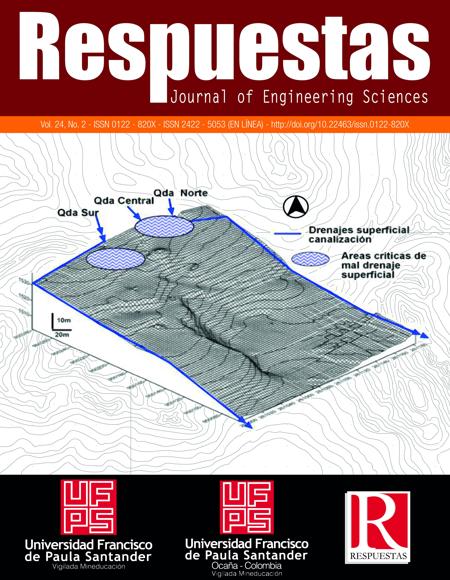Non-invasive Geological Methods for Solving Geotechnical Problems of Slope Stability: Case Study
Métodos geológicos no invasivos en la solución de problemas geotécnicos de estabilidad de taludes: Estudio de caso
Main Article Content
The soil geotechnical conditions for the foundation of civil structures are evaluated, through the application of geophysical techniques (vertical electrical probes) and geochemical (analysis of stable isotopes of water), to recognize the hydrogeological conditions of the subsoil. The dominant rocky substratum are clayey and sandy phyllites of the Palmarito (Paleozoic - Permian) geologic unit; These rocks, when they decompose, form clays, silts and sands from fine to very fine grains. The location site of the work is projected on old deposits of alluvial fans (Quaternary) partially stabilized, with a mixture of gravel-silty gravel residual soils (GC), with a thickness greater than 15 m. The measured groundwater levels (2 m) correspond to a discontinuous layer of fine to very fine saturated sand. Through geochemical and geophysical methods, it was possible to know the distribution of groundwater for the design of the drainages and the surface of the rotational sliding of the dry stratum superior to the phreatic level (2m) is recognized. The corrective stabilization of the slope allowed reaching safety factor values greater than or equal to (FS = 1.5).
Downloads
Article Details
J. Bowles. Foundation analysis and design. New York: Cambridge University Press. 1982.
J. Corominas, R. Copons, J. M. Vilaplana, J. Altimir y J. Amigó, “Integrated Landslide Susceptibility Analysis and Hazard Assessment in the Principality of Andorra”, Natural Hazards, vol. 30, pp. 421–435. Sept 2003.
D. Cruden, y D. Varnes, Slope movement, types and processes. National Research Council, Washington. DC. USA. 1995.
I. Casteletti, Nociones de Mecánica de Suelos. Facultad de Ingeniería. Universidad de Los Andes. Mérida: Talleres Gráficos Universitarios, 2000.
Q. F. Bécher, M. T. Blarasin, y H. O. Panarello, “Modelado geoquímico e isotópico de las relaciones agua superficial-subterránea en la planicie arenosa del sur de Córdoba”, Rev. Asoc. Geol. Argent. vol.72, no.4, pp. 87-95, Diciembre 2015
V. Chow. “Hydrologic determination of waterway areas for drainage structures in small drainage basins”, Experimental Station Eng. Univ. of Illinois, Urbana, TI11. Bulletin No. 462, pp. 198-211, June 1962.
I. Clark, y P. Fritz. “Environmental Isotopes in Hydrogeology”. Conciencia Sísmica, vol. 68. no. 5, pp. 384-393, Abril 1997.
R. González, D. Useche, D. Sánchez, y O. Guerrero, “Hidrogeomorfológica del Sistema de Humedales de las Microcuencas La Sucia, Platanillo y La Honda: Determinación de Cantidad y Calidad de Agua. Parroquia Chaguará – Municipio Sucre, estado Mérida”. Revista Ciencia e Ingeniería, vol. 37, no. 3, pp. 37-44, noviembre, 2017.







